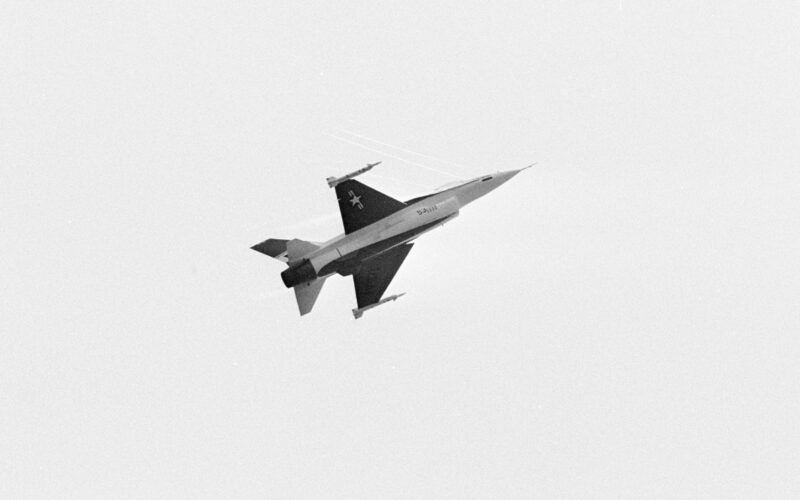The first flight of the iconic F-16 Fighting Falcon, initially scheduled for February 2, 1974, took an unexpected turn on January 20, 1974, at Edwards Air Force Base in California. Piloted by test pilot Philip Œstricher, this unplanned event marked the beginning of the F-16’s remarkable career.
The Lightweight Fighter program
The F-16’s development was a response to the Lightweight Fighter program, which had identified an increasing need for a nimble and adaptable fighter jet that could excel in various roles, from air-to-air combat to ground attack missions. The team at General Dynamics, led by engineer Harry Hillaker, conceived a design that emphasized lightweight construction, advanced avionics, and a powerful engine.
The F-16’s distinctive features included its bubble canopy, giving the pilot exceptional visibility, and a single-engine design that allows for impressive maneuverability. Its innovative fly-by-wire control system, a first for a production fighter aircraft, played a pivotal role in enhancing its agility and responsiveness.
An accidental maiden flight
The F-16 prototype, known as the YF-16, was undergoing preparation by the United States Air Force 6510th Test Wing for its inaugural flight, with several taxiing tests needed to ensure the aircraft’s readiness. During these tests, the goal was simple: make the YF-16 roll at high speed without incident. However, as Œstricher pushed the throttle, the aircraft reached 240 kilometers per hour, experiencing unexpected rolling oscillations.
Recognizing the potential risk to the prototype, Œstricher made a swift decision. Rather than risk a catastrophe, he chose to go a little further, lifting the nose of the YF-16. In an unplanned turn of events, the aircraft left the tarmac and took to the skies, achieving an unplanned maiden flight.
The impromptu flight lasted only six minutes, but it left a lasting impact. After a quick return to the base, the prototype underwent studies to address the unexpected oscillations. Despite concerns of a delayed “official” first flight, the F-16 took to the skies again on February 2, 1974, with Œstricher at the controls.
Since its unexpected debut, the F-16 has become one of the most successful and widely used fighter jets globally. Entering service in 1979, the F-16 has seen numerous iterations and remains in production at Lockheed Martin. With over 4,500 units produced and approximately 3,000 still in active service, the F-16 continues to be a symbol of versatility and excellence in the world of military aviation.

